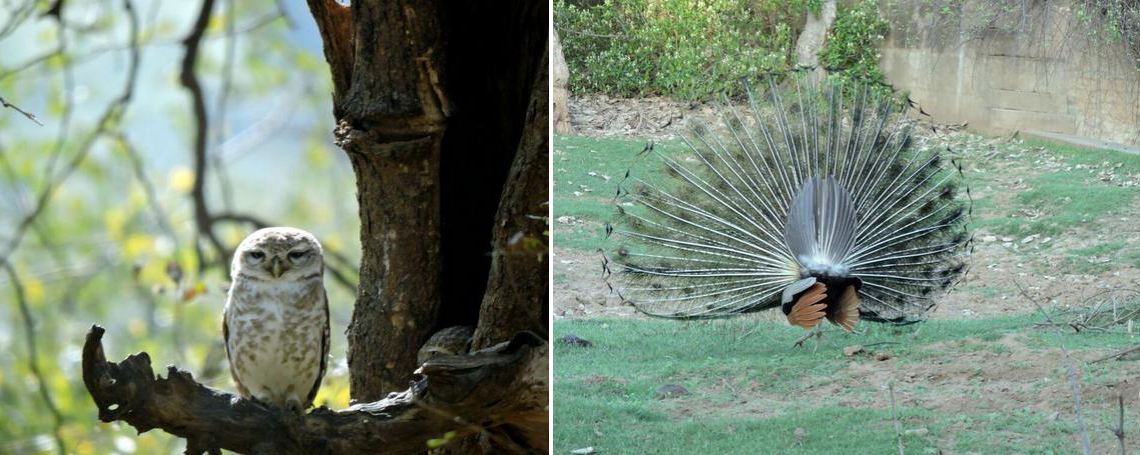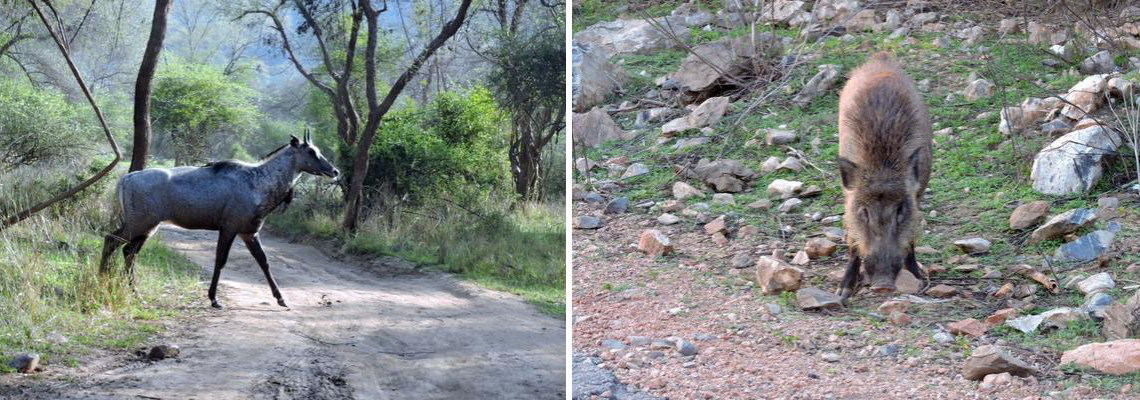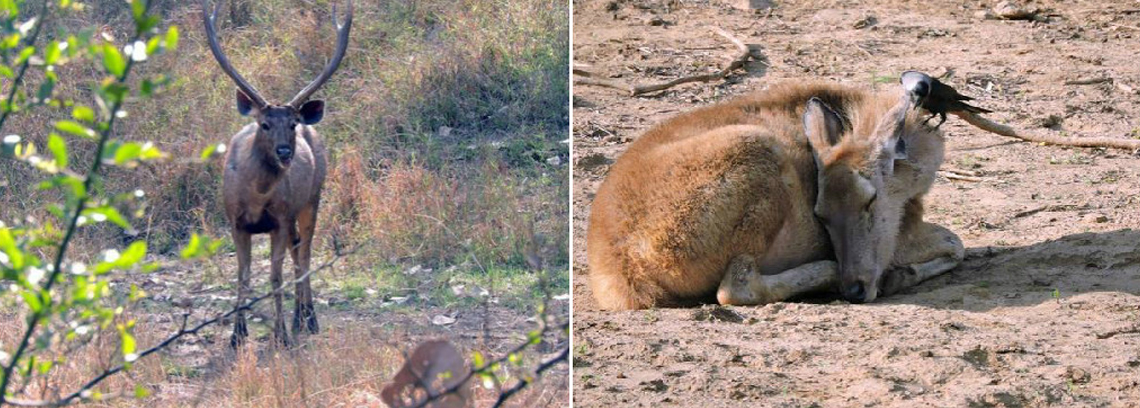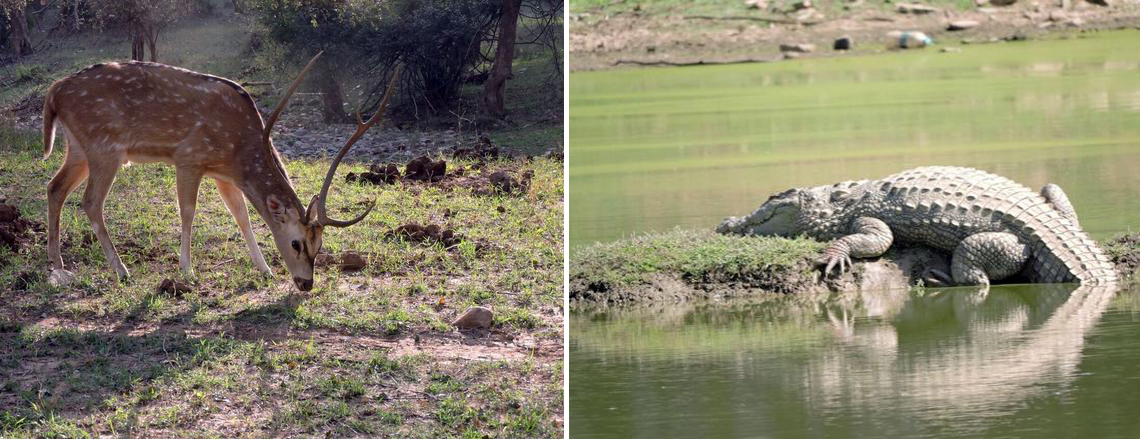Nature’s Playground – Sariska, Part II
In the second part of her travelogue of Sariska, traveller Shireen Bharucha takes us along on her rendezvous with the many kinds of animals that dwell in the sanctuary in perfect harmony with nature.
On our arrival an oriental magpie-robin, a small black and white bird with its tail held upright, perched atop the gate eyes us. What is truly amazing is the avian harmony as peafowl, the Eurasian ringed-necked or half-collared, pinkish-brown, red-eyed, doves with a distinctive black neck collar (as the name suggests), common Indian partridges also known as grey francolin, the grey-brown yellow-billed jungle babblers and crows have a common breakfast at the entrance of the sanctuary.
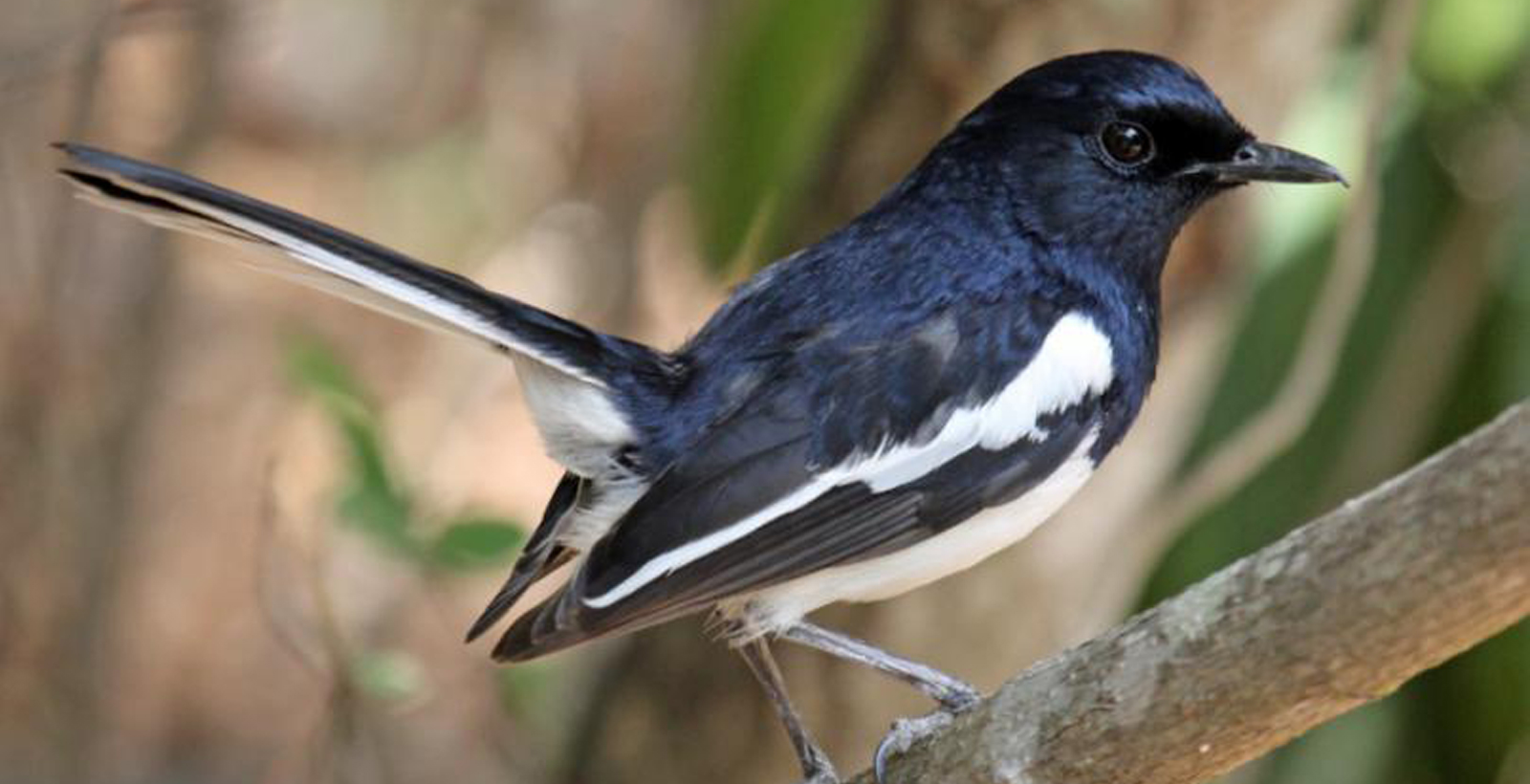
Image Credit – Wikimedia
During our drive through the sanctuary we encounter:
A glossy black drongo with its wide forked tail sits on a grassy patch looking for insects. This small but brave bird attacks larger birds of prey invading its territory, earning it the name of ‘king crow’. Small birds nest in the well guarded domain of the drongo.
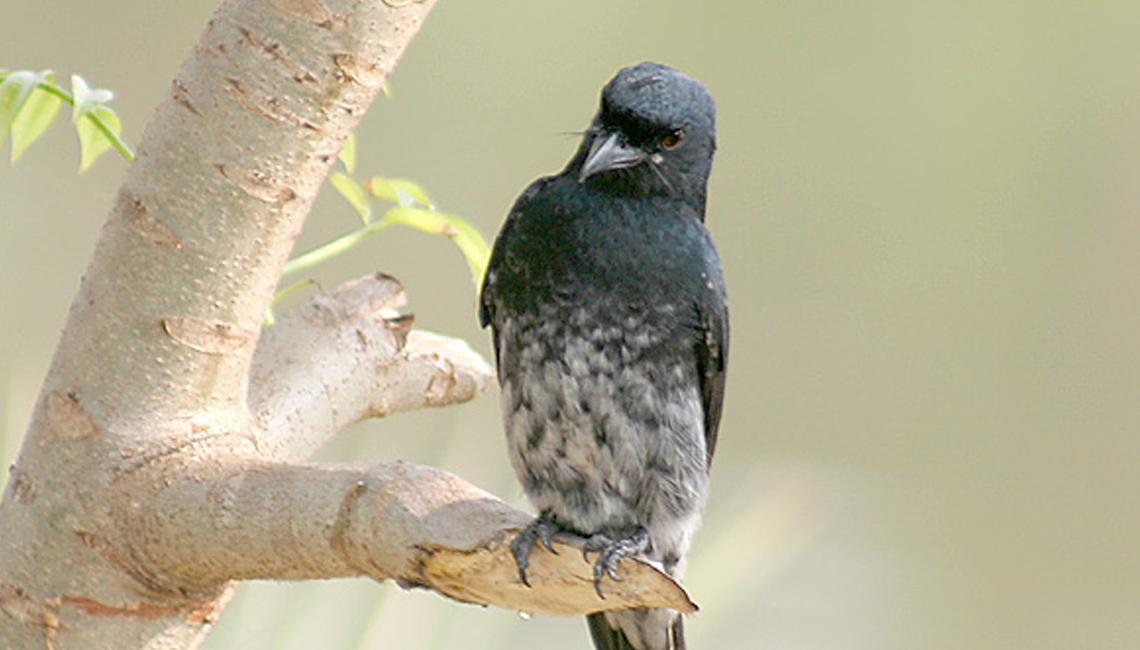
Image Credit – Black Drongo Wikimedia
A large number of peafowl ambling past, even though the gypsy is close enough to brush against them! We see a peacock dance, his feathers spread out fanlike, but unfortunately his back is to us. The tail feathers trail the peacock in a distinctive train with markings of varied iridescent hues. This train is used for courtship displays. Peahens choose their males according to the size and colour of the trains.
A stocky, yellow-eyed, spotted owlet watches us suspiciously from its perch on a branch outside its nest in the hollow of a tree. Also seen are the more common birds like the mynahs, rose ringed parakeet, and red vented bulbuls.
A golden backed, red crowned, woodpecker flies past, its golden feathers gleaming – a beautiful sight to behold. The female of the species has a black crown. These birds have only three toes.

rufoustreepies | Crocodile | Bar Headed Goose
We have a unique experience as we stop at a check post. A flock of jungle babblers, babbling noisily and a pair of cinnamon coloured, black headed, long tailed rufoustreepies, which belong to the ‘crow family’, alight on the gypsy looking for food totally unmindful of our presence as they perch all over the vehicle, including on the seats!
We see neither the crested serpent eagle, nor the great horned owl, which are the famed residents of this forest.
After leaving the check post we head to a small lake. A flock of colourful painted storks, a graceful grey heron, a red-wattled lapwing and a long legged black-winged stilt also known as common stilt or pied stilt, wade in the water looking for fish. However it is the sight of a pair of bar headed geese, on the banks of the lake, feeding on grass that excites me, for this is my very first viewing of this species. The pale grey birds are distinguished by the black bars on their heads. These high flying geese migrate from Tibet, Kazakhstan, Mongolia and Russia. They have been known to fly across Mount Makalu, the earth’s fifth highest mountain.
Three crocodiles bask lazily on rocks that jut out of the water.
Mr. Babu informs us that while the morning safari is best for birding, the evening safari is better for animal viewing. Though we see no predators, we encounter most of the prey base: nilgai, sambar and chital resting at water holes or grazing in single or mixed herds, langurs, rhesus monkeys and wild boar.
Nilgai also known as blue bull or blue buck is so called because the adult males sport a grey to a blue-grey coat. In contrast the females and calves are tawny brown. The male has short curved horns. The nilgai is Asia’s largest antelope.
The grayish black wild boar largely resembles a domestic pig, since it is its ancestor. The most distinguishing feature of a wild boar is a pair of canines that grow upwards as well as outwards
Sambar is the largest Oriental deer species and the tiger’s favourite food, as a large sambar provides a four day meal. A sambar watches alertly when it senses danger and keeps giving alarm calls till the danger passes, making it an easy prey. The stags have large antlers with the largest recorded at over four feet! We come across a herd of sambar resting at a waterhole. Crows hover around them, sit on them and make a meal of insects embedded in their hides. The sight of a sambar tenderly nursing her fawn is endearing.
The chital also known as spotted deer or axis deer is the commonest deer found in India. The name chital is derived from the Bengali word ‘chitral’, which means spotted. The stags shed their three-pronged antlers annually, which they eat as a source of nourishment. These extremely timid creatures are known to be alarmed at the sound of a falling leaf!
Langur literally means ‘having a long tail’, an apt description for this species of monkey. This black faced primate, with black hands and feet, is also called Hanuman langur, grey langur, common Indian langur and Asian leaf eating monkey. The presence of a predator is indicated by the coughing alarm call of the lungur. According to Hindu mythology, the langurs helped extricate Lord Hanuman when he got trapped in a fire during the battle of Lanka. While doing so, their faces, hands and feet got charred. Hence, the Hindus regard these monkeys as sacred.
Troops of brown rhesus monkeys with their expressive red faces and red behinds abound in the park. Rhesus monkeys contribute much to man since they are used for medical and scientific research. Doctors identify different human blood groups by the antigens found in the blood of these monkeys. As far back as June 11, 1948, Albert I the first primate astronaut, a rhesus monkey, rode to space on a US launched V2 rocket. The experiment failed, as the rocket reached an altitude of 30-39 miles only. The poor creature died of suffocation during the flight.
Mr. Babu informs us that the forest is home to numerous snakes, especially the cobra, which come out of their burrows during the rains. He also tells us that besides the tigers, there are 60 leopards, a solitary bear and numerous other animals. Though we do not encounter the more exotic species, the majestic solitude of the wilderness offers a quiet natural beauty and a sense of utter peace, so hard to come by elsewhere.
Did you know that Sariska also has an interesting history and mystery associated with it? In the next part of this series, Shireen Bharucha shares some interesting, eerie insights about the town of Sariska.
Quick Links
Nature’s Playground – Sariska, Part I
Nature’s Playground – Sariska, Part II
Nature’s Playground – Sariska, Part III
Nature’s Playground – Sariska, Part IV
The views expressed by the author are in her personal capacity.

